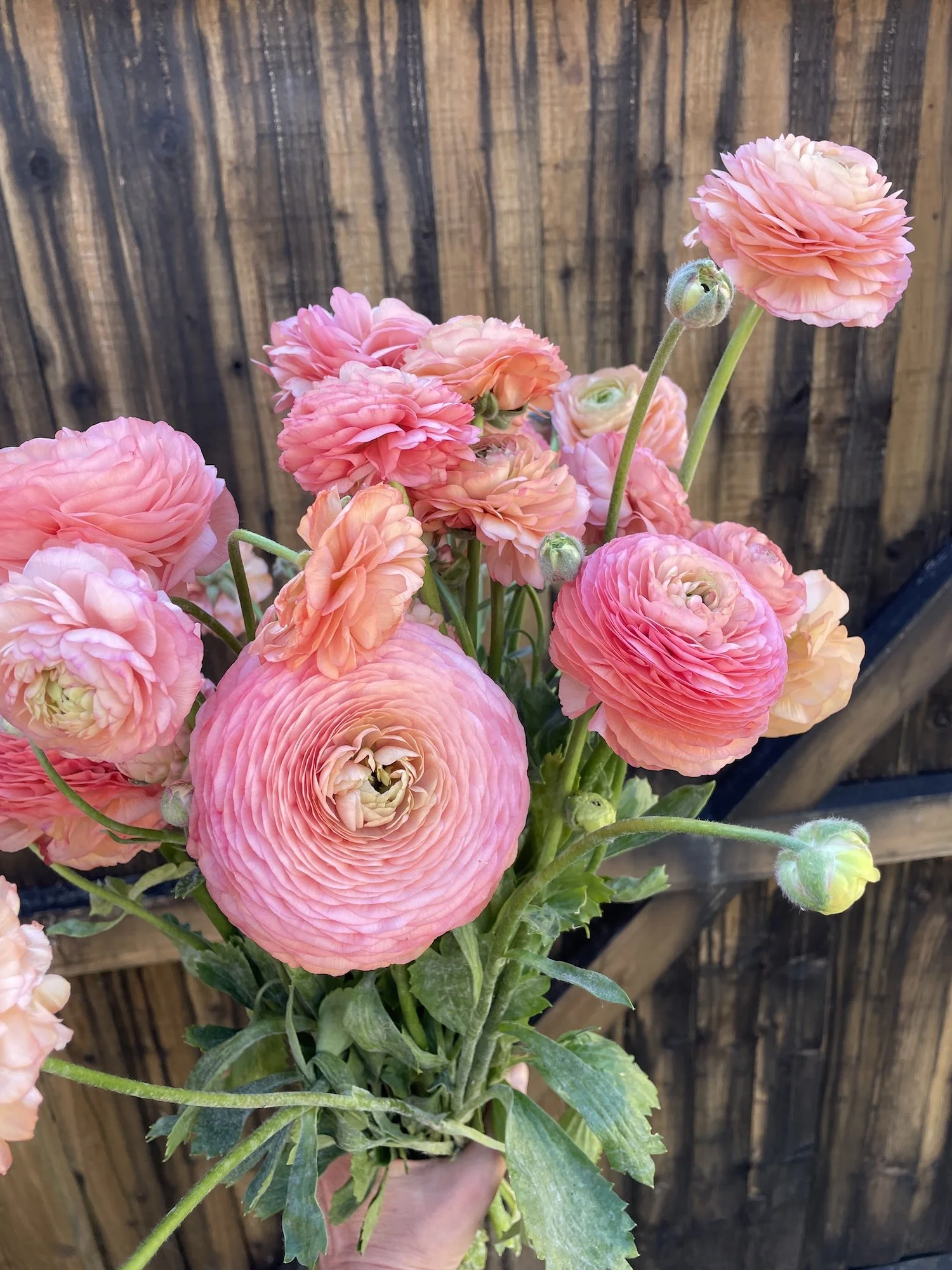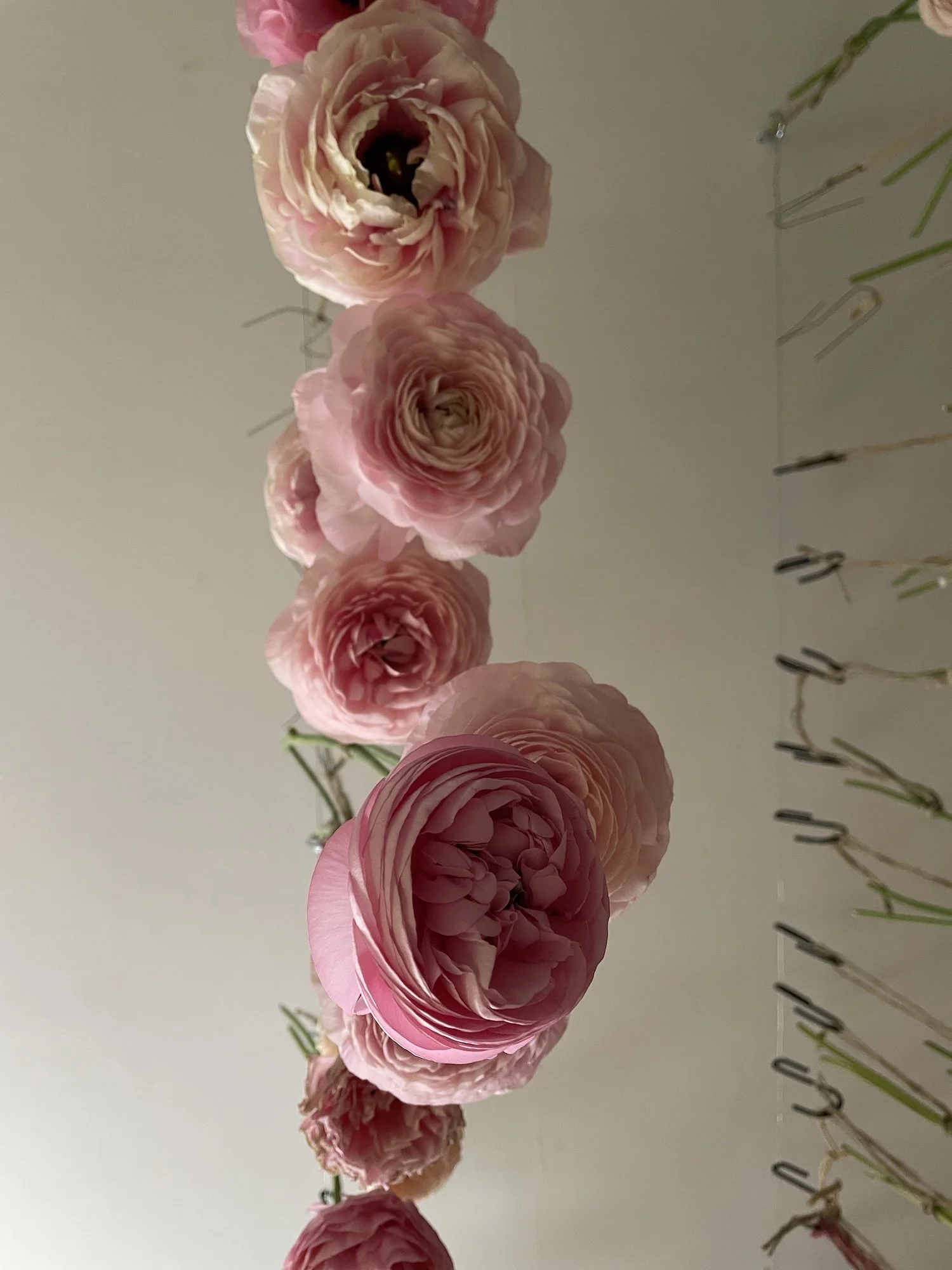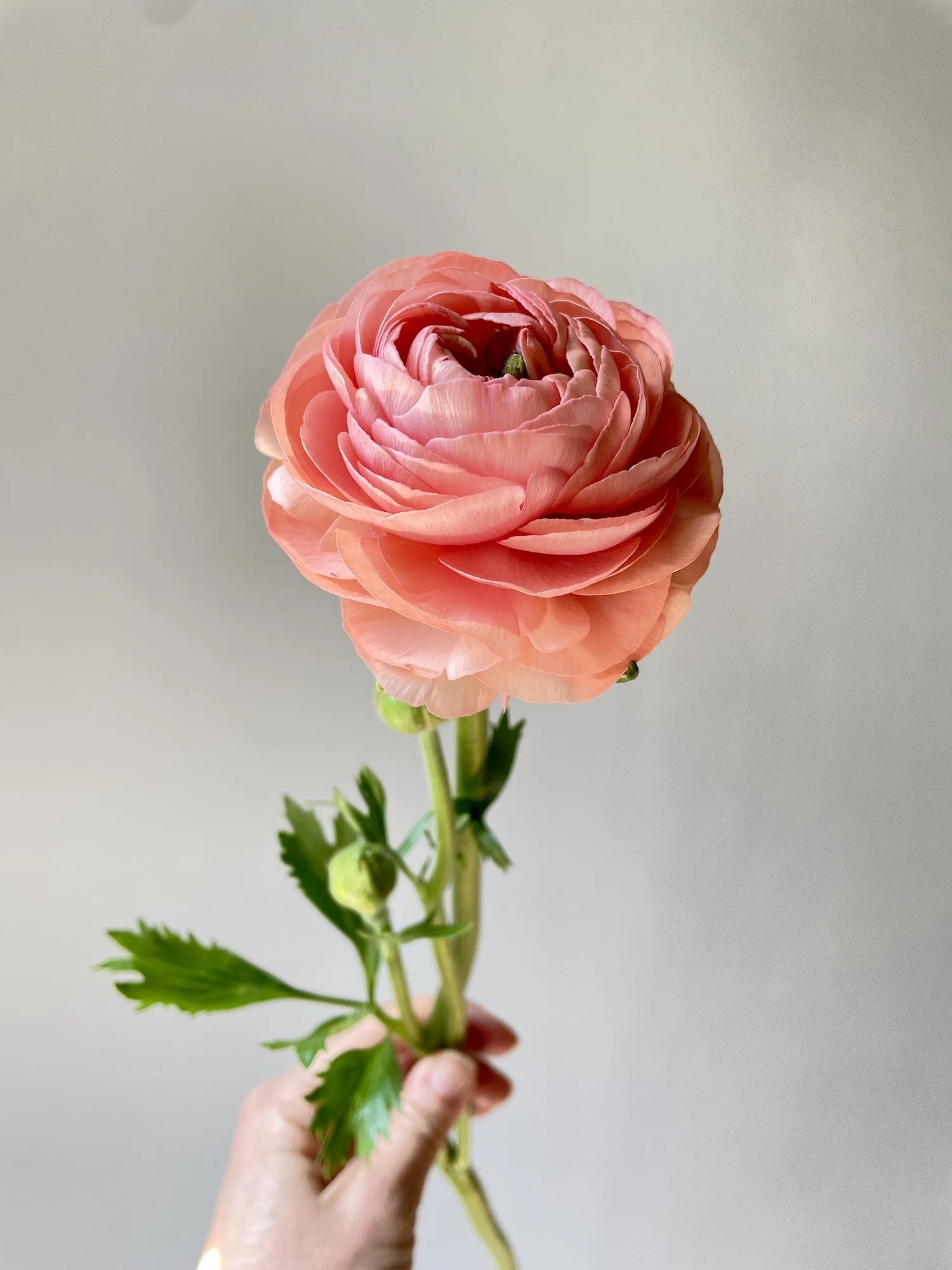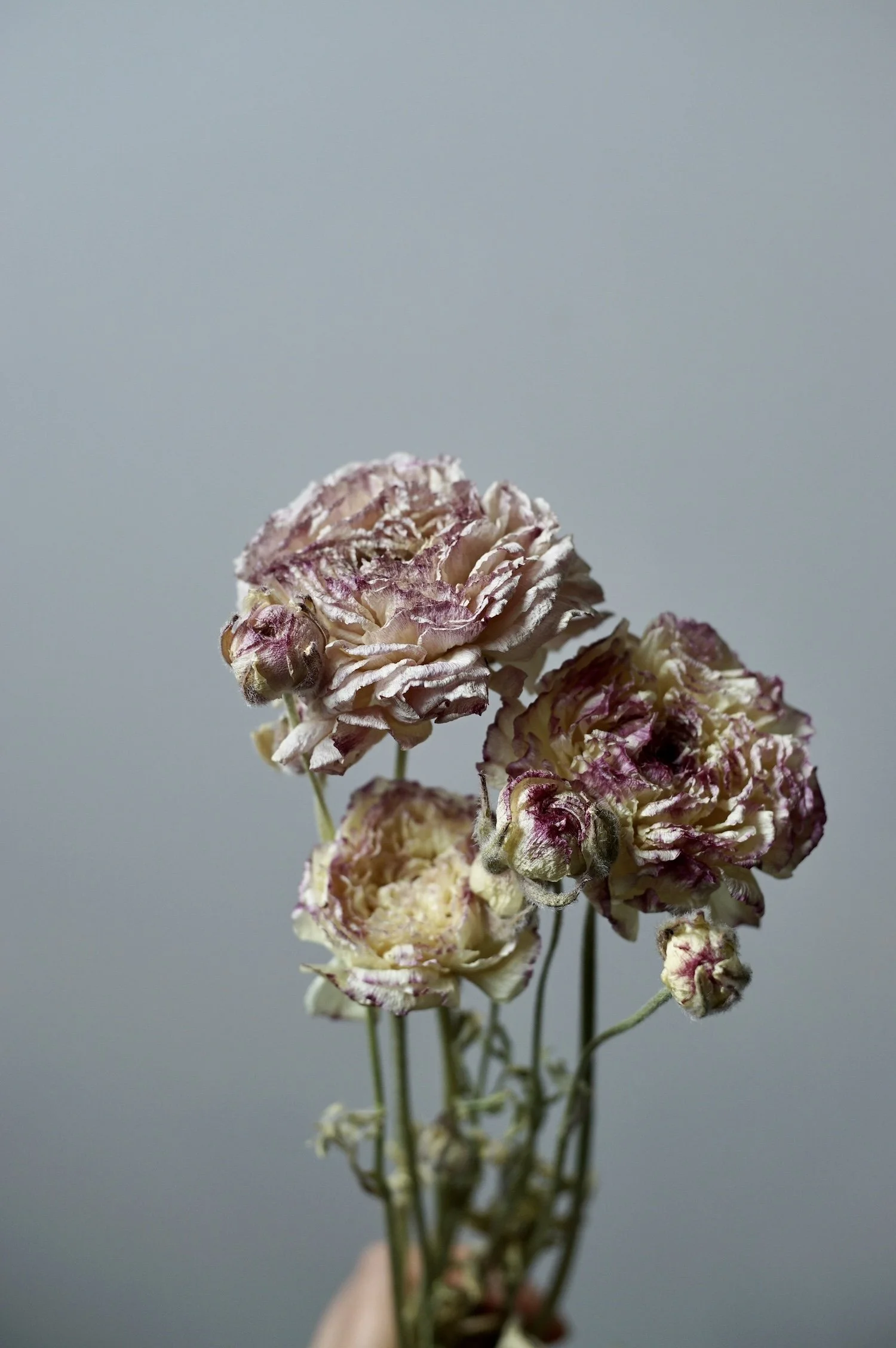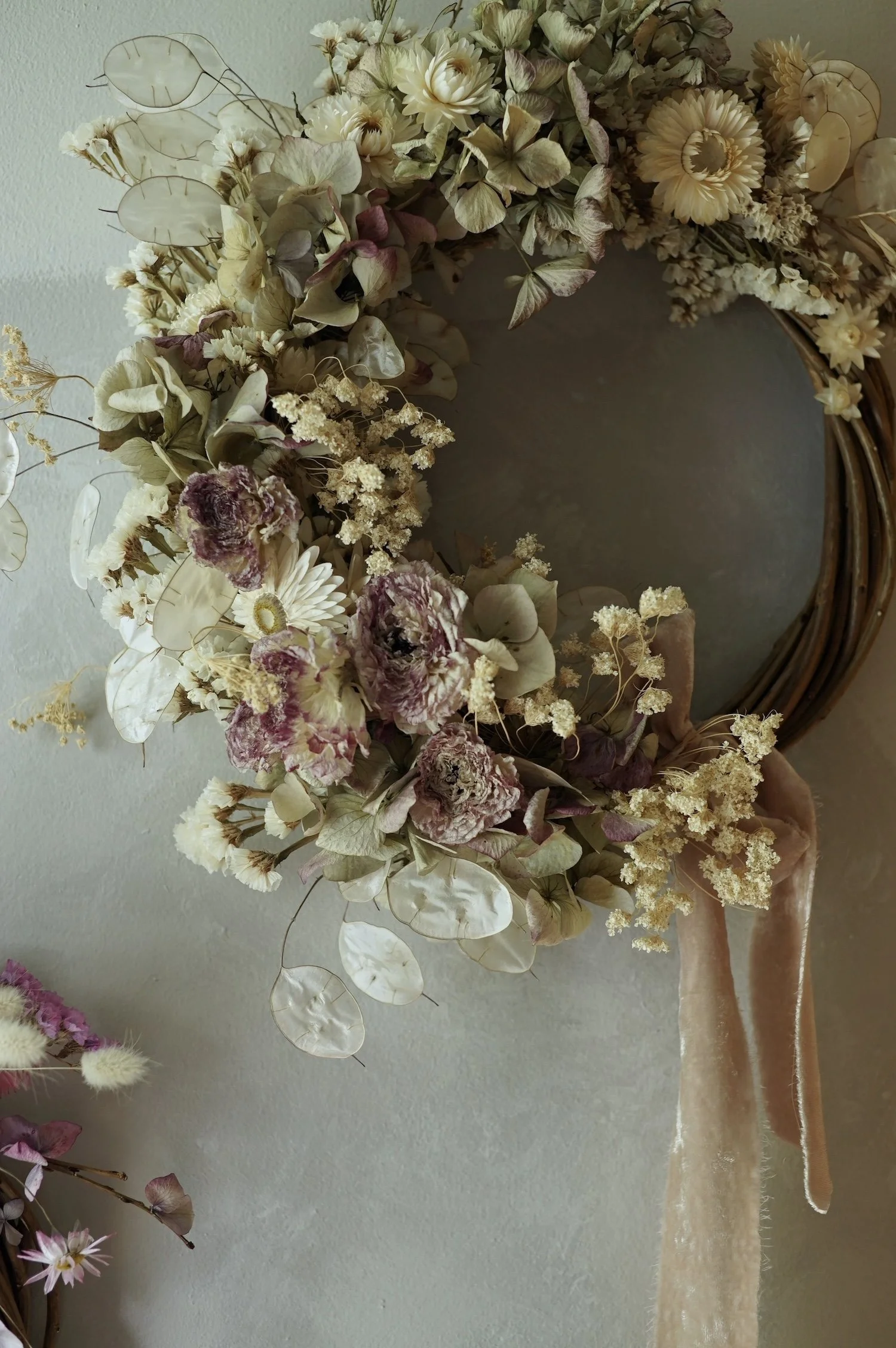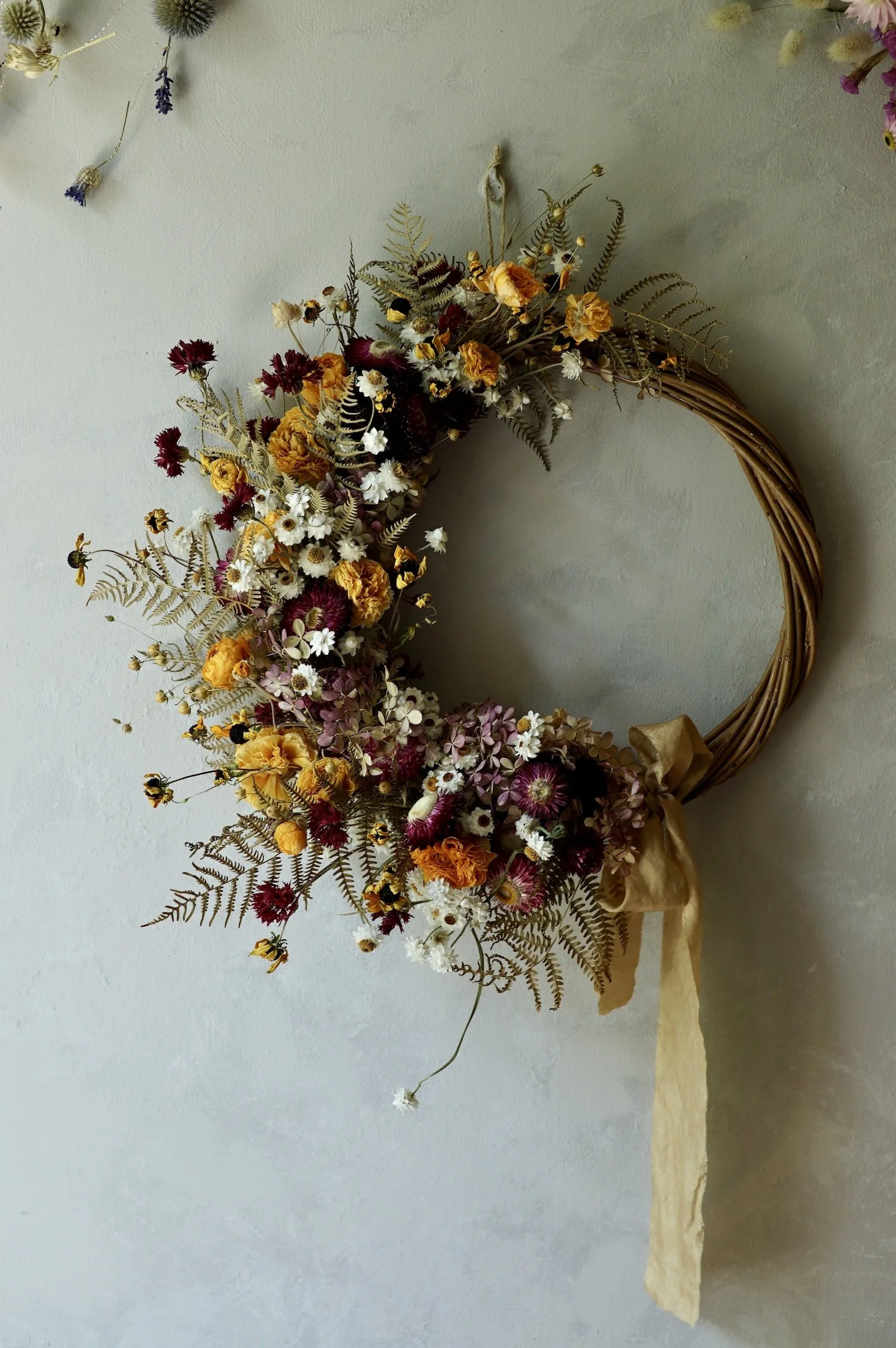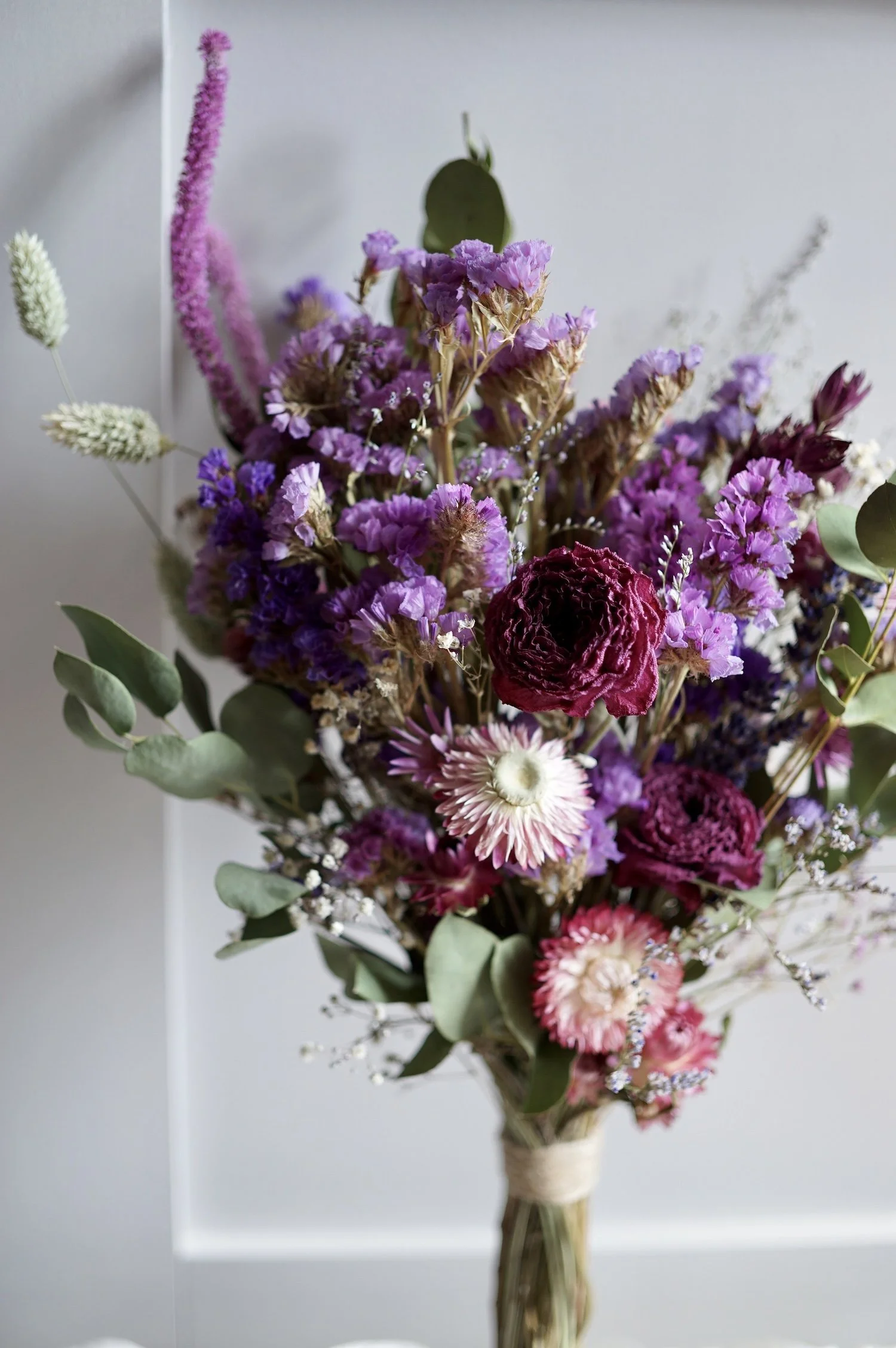How I dry ranunculus flowers
Ranunculus are some of the most beautiful flowers, with their layers and layers of petals that gently unfurl as the flowers open. With all those delicate-looking petals, you wouldn’t think they’d be good candidates for drying, but they make fabulous dried flowers! Following on from my previous post about growing ranunculus, here I explain how I dry, store and design with dried ranunculus.
When to cut ranunculus for drying
The first step is to cut them at the ideal stage of blooming. I try to make sure I cut them when most of the flower head has opened but the centre is still closed but soft (as opposed to a firm ball of closed petals in the centre). If I wait until the centre is fully open, I find that the petals drop more easily after drying. Although I will note here that sometimes I get a few flowers that drop lots of petals after drying even though I thought I cut them at the ‘right’ time - sometimes it just depends on the individual flower. I cut ranunculus when they’re free from rain or other significant moisture as it can get in between petals and cause brown spots or rotting, and I clean off any aphids after cutting, checking between the petals too.
How I dry and store ranunculus flowers
I hang ranunculus upside down to dry, out of direct sunlight, in my studio space in our house. The temperature there is usually between 18-20C (65-68F) depending on the weather. How long drying takes depends on flower size and the ambient temperature and I think it’s usually at least around 3 weeks. If you feel any coldness in the stem, or it’s still very flexible, it needs more drying time. I’ve heard of other people drying ranunculus face up on a wire grid (the same way I dry rudbeckia flowers) so the result is a more-open dried flower. However, I find that for upside-down dried flowers, once they’re the right way up, gravity does a good job at opening the flowers so you can see all of the lovely crinkly petals. Below you can see photos of ranunculus moving through the stages of the drying process and some before-and-after images of the different varieties I’ve grown.
I store dried ranunculus hanging upside down and away from direct sunlight. They can be stored in boxes (only after they are definitely fully dried) but you need to position them so the flower heads don’t become squashed. They can easily become flattened either by other flowers or by simply resting against the side or bottom of a box.
Ways to design with dried ranunculus and how long they last
Dried ranunculus flowers are superb for using in bouquets, acting as gorgeous, frilly focal flowers. I’ve also used them in buttonholes, wreaths, garlands and urn arrangements. Because of their delicate nature, I think they look especially beautiful as bell jar specimens. Smaller flowers can work well in more delicate work like flower crowns.
The colour quality of dried ranunculus usually lasts for about a year. Paler colours fade faster while stronger colours take a bit longer to fade, often showing colour loss at the petal edges first. As long as the flowers aren’t disturbed, they’ll hold onto their petals well. So if you’re just as intrigued by the textures and shapes of these lovely flowers, you can still enjoy faded dried ranunculus for as long as you like.
That’s how I dry my ranunculus flowers! I hope you found it useful or are perhaps now inspired to try growing and drying your own ranunculus.
